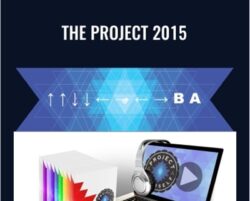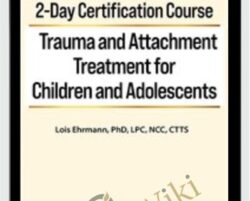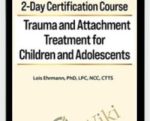Becoming a Certified Child and Adolescent Trauma Professional will demonstrate your passion for and knowledge of treating traumatized children and adolescents.This 2-Day Certification Course in Trauma and Attachment Treatment for Children and Adolescents will provide you with the essential skills, proven interventions, and state-of-the-art treatments you need to successfully treat your most challenging clients—children, adolescents and families suffering from trauma and attachment wounds.Children’s neurology is impacted at the deepest levels of development resulting in emotional, behavioral and psychological problems. When the foundational blocks of attachment are fractured, you face therapeutic roadblocks—innate distrust of others, acting out, avoidance/shutting down, extreme reactivity, self-harm, affect dysregulation, substance abuse, poor boundaries—making successful treatment seem impossible to achieve.Purchase this intensive 2-day certification training and learn the most effective tools and techniques to help children and families more fully engage in treatment, identify and express their emotions, manage disturbing thoughts and feelings, and achieve and maintain recovery.Elevate your practice and improve your ability to:Skillfully integrate proven interventions rooted in EMDR, IFS, Somatic PsychotherapyUnpack children’s history and create a cohesive trauma narrativeUse children’s trauma narrative to process attachment disruptions and trauma responsesMap children’s problematic behavior and the parent’s responses to the behaviorHelp children identify trauma triggers and develop appropriate, healthy regulation skillsHelp children overcome fears about connecting in relationshipsRepair self-destructive patterns, negative limiting beliefs and affect dysregulationEmpower families to improve boundaries, discipline and communicationTeach families/caregivers concrete, practical ways to repair attachment woundsBest of all, you can become a Certified Child and Adolescent Trauma Professional (CATP) upon completion of this course—at no additional cost to you—adding valuable skills and credentials to your resume.Purchase today and show your clients and their families with trauma and attachment wounds, that you’ve taken the time and effort to effectively help them heal!Certification Made SimpleIn just three easy steps, you can earn your certification as a Certified Child and Adolescent Trauma Professional.Step 1: Watch the digital seminarStep 2: Complete the CE test and instantly print your certificate of completion.Step 3: Submit your certificate of completion and professional license to Evergreen CertificationsThat’s it! No hidden fees. No catch. Just certification made EASY.Articulate the neurological impact of trauma on attachment in children and adolescents and how current research informs treatment planning.Differentiate between the clinical presentation of children and adolescents who exhibit insecure vs. secure vs. disorganized attachment.Implement trauma and attachment assessments to develop observable and measurable treatment plan goals.Implement the “internal working model” intervention to clarify the client’s attachment category to inform treatment planning.Operationalize the core treatment goals into measurable objectives in the treatment of trauma and attachment.Implement the Integrated Attachment and Trauma Timeline Strategy (IATTS) to organize and construct the client’s trauma narrative.Utilize the client’s trauma narrative to process attachment disruptions and trauma responses.Apply bilateral tapping to reduce the intensity of strong affect and/or to amplify a strength resource.Integrate elements of Internal Family Systems psychotherapy to map out a child’s problematic behavior and the parent’s responses to the behavior.Utilize bibliotherapy to teach children, adolescents and families the concepts of Internal Family Systems psychotherapy to improve treatment outcomes.Integrate resource tapping (EMDR) into Attachment Focused Family Therapy to increase the strength of attachment and healthy regulation in children, adolescents and families.Compose mindfulness-based breath work, guided imagery and sensory awareness to improve affect regulation.Get 2-Day Certification Course: Trauma and Attachment Treatment for Children and Adolescents – Lois Ehrmann, Only Price $175Attachment Theory and Attachment TherapyRecent influences in attachment theory and therapyAttachment importance in the development of the healthy individualAttachment styles vs. disorganized attachmentNeuroscience supporting bottom-up therapeutic strategiesDSM-5®: Classification of trauma and stressor-related disordersNeurological Impact of Trauma and AttachmentHow the research informs treatmentTrauma is stored/stuck in the right hemisphereChronic activation of the fight/flight/freeze response (Amygdala issues)The reason for the stucknessCortisol and its impact on cognitive impairmentIndicators of Trauma and Attachment DisruptionCommon diagnostic mistakesCharacteristics of the children and adultsView attachment as a continuumAssessments for Trauma and Attachment Wounds: Case Studies and Video SessionsProtocol to assess the strength and health of the parental/caregiver systemMost effective scales, measures and instrumentsMethods to explain the internal working model of the child to the parent/caregiverDiagnostic considerations/Differential diagnosisComplex Trauma, Complex PTSD, Developmental Trauma, Disorganized Attachment, Reactive Attachment DisorderTranslate Trauma and Attachment Goals into SMART ObjectivesCore treatment goalsRelational factors between client/therapist and child/parent/caregiverDismantling the individual’s unhealthy negative internal working modelIncrease the level of affective masteryReduce distancing defensesIncrease attachment within healthy relationships and for adults with their own childrenContainment of rage, anger and pain so that resolution can occurHow to operationalize goals into measurable objectivesThe Integrated Attachment and Trauma Timeline Strategy (IATTS): Help Children and Families Unpack Their HistoryA guide to move from assessment to treatmentTechniques to clarify and construct the client’s cohesive narrativeMethods to “chunk” overwhelming and disorganized historical materialIntegrates with evidence-based treatment modalitiesEye Movement Desensitization Reprocessing (EMDR)Internal Family Systems (IFS)Attachment-Focused Family TherapyBibliotherapyExpressive Therapies and Somatic PsychotherapyTECHNIQUES WITH CASE STUDIES: PUTTING IT ALL TOGETHER WITH PRACTICE TIME!A Child Who Had No SafetyA view of Attachment-Focused Family TherapyHealthy vs. disrupted attachment/bonding cycleIntersubjectivity and Attunement: What being in sync does/does not look likePACE: Playfulness, Acceptance, Curiosity and EmpathyCo-regulation of affect and co-creation of experiencesWhen Traumatized Children are Broken into Many PartsSecure vs. anxious and avoidant attachment stylesDisorganized attachment: Recognize the signsHow attachment impacts parent-child dyadsIntegrate IFS into Attachment-Focused Family TherapyParts work through sand tray, art strategies and puppetryFull of Rage with No Where to GoIntegrate EMDR into Attachment-Focused Family TherapyTeach parents and children resource tapping and positive self-talkUse tapping as part of imaginal nurturingCalming and self-regulating strategies from EFTNaming feelings with bilateral drummingParts that Children Wall OffTerrified of being terrifiedThe freeze of the fight-flight-freeze trauma responseHelp children understand their own thoughts, feelings, behaviors and experiencesThe Rage that Comes from Physical AbuseWhen children reenact the trauma of abuseSee the positive intention in all partsTeach compassion, curiosity, calmness and connectedness through expressive therapiesWhen Parents and Children Both Have Activated PartsActivation Parts Map: Z-ProcessNaming and witnessing the activated partsHelping the parts understand each otherProtecting Sibling and Self in Foster CareProtector parts activity/worksheetTeach children to use their inner imagination to work with their partTransform terror into trustRepair the Fracture with Adoptive ParentsClarify the trauma and negative internal working modelParts mapping: Teach parts concepts to children and parentsIntegrate Bibliotherapy into IFSAssist parents how to engage in self-led parentingOther Trauma-Specific Evidence-based Treatment ModalitiesWhat they are used for and why clients seem to respond wellSensorimotor psychotherapyMindfulness-based approaches including breath work and imageryBiofeedback and EEG BiofeedbackLimitations of the related research and risks of each approachGet 2-Day Certification Course: Trauma and Attachment Treatment for Children and Adolescents – Lois Ehrmann, Only Price $175Tag: 2-Day Certification Course: Trauma and Attachment Treatment for Children and Adolescents – Lois Ehrmann Review. 2-Day Certification Course: Trauma and Attachment Treatment for Children and Adolescents – Lois Ehrmann download. 2-Day Certification Course: Trauma and Attachment Treatment for Children and Adolescents – Lois Ehrmann discount.
 IBD Advanced Buying Strategies Home Study Program – Gregoire Dupont
₹12,782.00
IBD Advanced Buying Strategies Home Study Program – Gregoire Dupont
₹12,782.00
 The Project 2015 – Amish Shah
₹6,640.00
The Project 2015 – Amish Shah
₹6,640.00
2-Day Certification Course: Trauma and Attachment Treatment for Children and Adolescents
₹28,386.00



